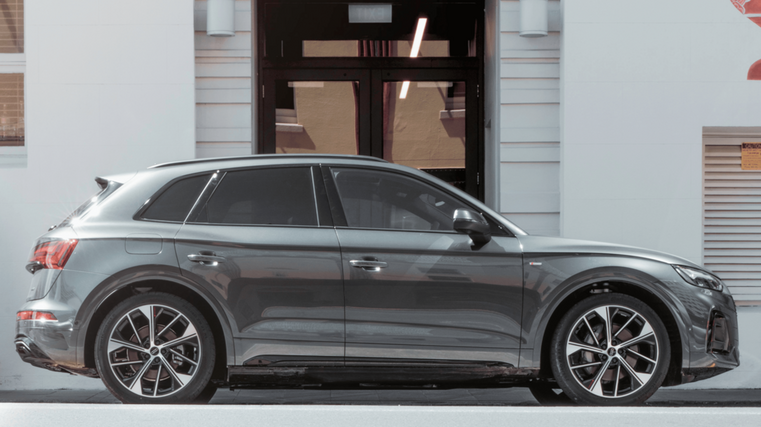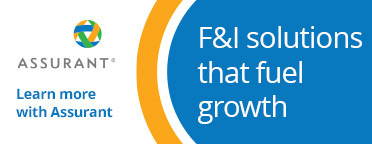Electric power with four rings

Audi is continuing to broaden its electrification by offering with its new A3, Q3, Q7 and Q8 TFSI e models.
They now form its new plug-in hybrid (PHEV) range alongside the Q5 TFSI e, which launched in New Zealand earlier this year.
Featuring the marque’s new hybrid management system, it provides drivers with a “confident” electric driving experience and simple charging management.
“We are excited to continue our electrification initiative with the roll-out of these TFSI e PHEVs,” says Greg Leet, general manager of Audi NZ.
“Joining the recently launched Q5 TFSI e in our showrooms, the larger SUVs are valuable additions to the range offering extra space, comfort and towing capabilities with better fuel efficiency. Our more compact models – the A3 and Q3 – serve customers as efficient daily drives.”
Two PHEV power units
In the Q7, pictured, and Q8 TFSI e quattro, one of the brand’s most modern engines – the three-litre TFSI – serves as the internal combustion engine (ICE) delivering an output of 250kW and 450Nm of torque. A permanently excited synchronous motor (PSM) serves as the electric motor.
Together with the coupling, which connects the ICE to the drivetrain, it forms the hybrid module for a combined peak output of 340kW and 700Nm of torque. A quick and smooth-shifting eight-speed tiptronic transfers the two motors’ forces via the quattro drivetrain to all four wheels.
When both power units work together in boost mode, the Q7 TFSI e accelerates from 0-100kph in 5.4 seconds and onto an electronically limited top speed of 240kph. The Q8 TFSI e quattro delivers 0-100kph in 5.4 seconds.
In electric operation, the Q7 can achieve up to 50km and the Q8 up to 48 km in accordance with the WLTP procedure.
The A3 and the Q3 TFSI e include a 1.4-litre TFSI and PSM. The latter is integrated with the housing of a six-speed S tronic transmission. Together, these motors generate 150kW and 350Nm in the A3 TFSI e, and 180kW and 400Nm in the Q3 TFSI e.
The A3 TFSI e can reach 100kph in 7.6 seconds and the Q3 TFSI e in 7.3. Both have electronically limited top speeds of 140kph in pure-electric mode. In electric operation, the Q3 has a range of 55km, while the A3 can cover up to 62km.
Predictive operating strategy
Whether driving short or long distances, the TFSI e’s hybrid management is designed for drivers to cover large sections of daily journeys on electric power.
The drive will start in fully electric “EV” mode. “Hybrid” mode offers two operating modes – “Auto” and “Hold”.
In “Auto” mode, the predictive operating strategy is activated automatically when route guidance is started in the standard MMI navigation plus. The battery charge is spread intelligently along the route with large electric portions in the city and in stop-and-go traffic.
In “Hold” mode, the battery’s existing state of charge is kept at the current level with just minimum fluctuations. This is done by recuperation and shifting the load point. After a long-distance journey, this allows the following urban drive to be covered on purely electric power.
Freewheeling & recuperation
The phases in which the driver takes their foot off the accelerator pedal are also important for the efficiency of these PHEVs. The predictive efficiency assistant (PEA) takes over the regulation in such situations.
In addition to the navigation data, it also takes the distance to the car in front into account and decides between freewheeling with the TFSI switched off, or “gliding”, and recuperation. These models can recover up to 25kW of power just by coasting and feed it back to the lithium-ion battery.
When operated as an alternator, the electric motor performs all light and medium brake applications up to 0.3g, which make up more than 90 per cent of all deceleration processes in everyday customer operation. The hydraulic wheel brakes are activated only in the case of heavier deceleration processes.
Thanks to sophisticated fine-tuning, the transition between the electric and hydraulic brakes is virtually imperceptible. This is because the brake pedal always provides good feedback and can be modulated precisely.
During a brake application, the Q7 and Q8 TFSI e achieve a recuperation power of up to 80kW, while the A3 and Q3 can recover up to 40kW.
Specifics with models
Audi says its A3 40 TFSI e “truly has the driver’s needs at its heart” with features such as lane-change assistant and tyre-mobility system as standard. The interior comes with a smart fabric trim complemented by titanium-grey headlining and platinum grey inlays.
The Q3 45 TFSI e “lets the driver enjoy a powerful and sporty stance on the road”. The standard exterior includes black roof rails and window trims, adding to its sporty look. The interior features titanium-grey headlining finished with a micro-metallic silver inlays.
The Q7 60 TFSI e quattro delivers sporty appeal reinforced by its standard S line exterior, and striking rear and front design details. The look is completed by the black styling package and matrix LED headlights. Red brake calipers are installed behind the 20-inch wheels, and adaptive air suspension provides a “great range from taut handling to comfortable rolling”.
This model’s interior features the S line sport package. This includes sport seats with S line embossing, black headlining and aluminium inlays. When the doors are opened, LED lights in the sills project the four rings onto the ground.
Audi describes the Q8 60 TFSI e quattro as its “most progressive SUV coupé to date”. The standard S line exterior package sharpens its appearance with striking design details. The black styling package contrasts with the S line’s exterior attachments in body colour.
Matrix LED headlights come as standard, as does the adaptive air suspension sport. The S line sport package immerses the interior in black or partially in rotor grey on the seats. It includes sport seats with S embossing, pedals, footrests made of stainless steel and inlays made of matt-brushed aluminium.
Charging on the road
All TFSI e PHEVs come with a standard compact charging system plus, and a mode-three cable with a type-two plug for use at public stations.
The compact charging system comprises cables for household and industrial outlets plus a control unit. The system features an LED status display and safety functions, such as temperature and residual current monitoring. Audi also offers the optional wall-mounted holder clip and a lockable holder for the charging system.
The Audi A3 Sportback 40 TFSI e has a manufacturer’s retail price from $72,990 plus on-roads. It’s eligible for a rebate of $4,025 under the clean car discount scheme. The Q3 45 TFSI starts at $79,990 and gets a clean car rebate of $4,025. The Q7 and Q8 TFSI e 60 quattro are priced from $167,990 and $173,990 respectively.





